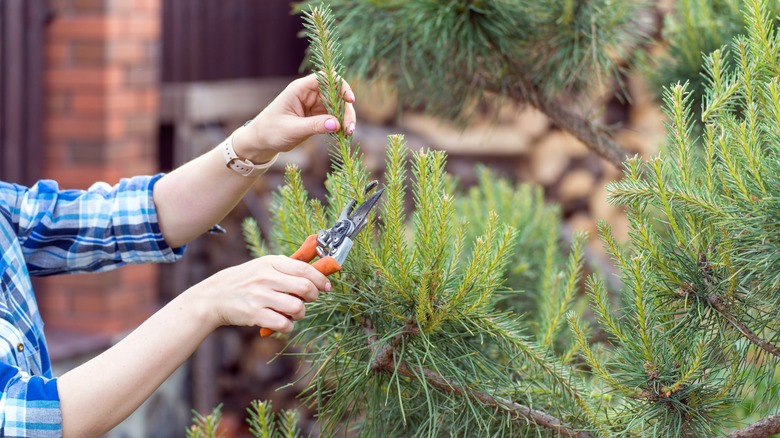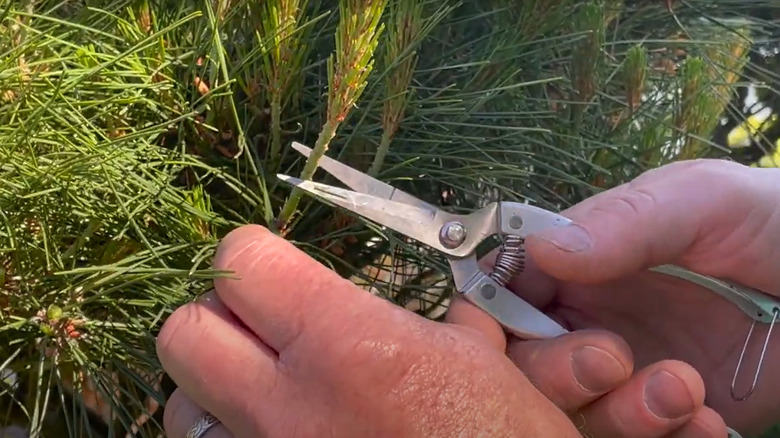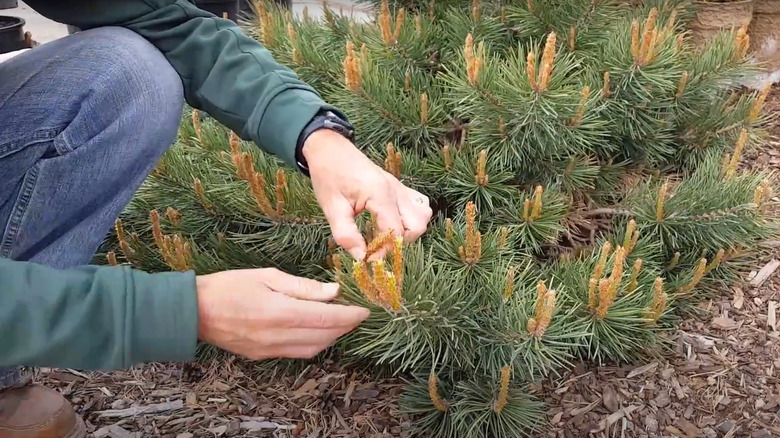The Best Method For Pruning Your Pine Trees
When searching for natural, ornamental options to establish a privacy screen or switching to the Zen garden style, chances are you came across the idea of using pine trees (Pinus spp.). And now you've got a few tall pines growing in your yard. Alas, despite being easy to care for, these stately conifers could do with some pruning to maintain their characteristic shape. The best way to go about this is to trim the tree's "candles," or the whorl of buds growing from the topmost branches during spring.
Wondering why it works? A pine candle grows into a main branch laden with lateral branches that support sparse growth. Spring growth happens only when the new (terminal) buds appear. So, if you were to simply cut the main branch from below—as is the usual pruning practice—rather than stimulating growth, you'd end up with a dead branch. But if you trimmed the still-developing candle, you would make the main branch compact, redirecting its resources to growing new side shoots, ultimately lending the tree a bushier, thicker look.
Candling the pine tree
Unlike their conifer brethren, pines require more care. If you want them to stick to your desired shape and height, you must catch them when they're still developing new bud clusters or candles. To get the desired results, allow the new candles to grow and produce needles. Once the shoot has gained a sufficient span, compare the length of the new needles to the ones already present on a previous candle.
Simply put, in a pine tree, a single branch showcases successive candle growth (year one growth topped by year two and so on), making comparisons easier. Once the new needles are at least half the size of last year's growth, shorten them according to your preferences using a sharp pair of hand pruners. But if you'd rather have the evergreens shorter, you can prune them down to ⅓ of the mature length. The point is that the more you prune, the shorter the tree. This will force the evergreen to set new buds right below its snipping point and gain a wider, denser expanse as it grows.
Other pruning considerations
If your pine is still young and produces tender green candles, you can pinch them instead of pruning them. It works equally well to keep your pines short. To do so, mark their ⅓ length and break them off with your fingers. However, limit such snipping practices to spring when the conifer is actively growing new shoots, as it will provide the tree with sufficient time to recover from pruning wounds and develop any new buds before it goes dormant in the winter. But feel free to take care of any diseased, damaged, or broken branches as they appear, except during the fall or end of summer.
Moreover, avoid using shears on the younger, succulent candles, which may leave them with browning tips. Remember, while pruning the pine trees to control their height, you'll need to cut down every candle, which can be labor-intensive over time. Not to mention, it is impractical for the bigger varieties, making it more suitable for dwarf cultivars like Mugo pine that usually fit right in with the landscape's layout. So, it's best to hire a tree care professional to prune larger pine trees.


